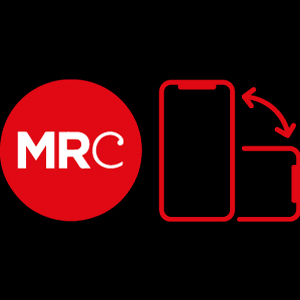By Justin Schlosberg
Last night’s Radio 4 Media Show featured an interview with shadow culture secretary Harriet Harman where she was pressed by Steve Hewlett on the burgeoning issue of what to do about media plurality.
In response, she reiterated Labour’s support for a system of thresholds to be applied to media ownership – particularly in respect of newspapers – arguing that control of more than 20 percent of the market may threaten plurality and the health of our democracy.
Although the bar is set higher than proposals put forward by most media reform campaigners, Harman’s distinction between a lower threshold (20%) which ‘may’ threaten plurality and a higher threshold (30%) which will certainly threaten plurality is instructive. It suggests the need to define a range in which dominant media groups should not face structural remedies but rather undertake public interest obligations to ensure that responsibility is attached to their power.
But that doesn’t eliminate the need for an upper limit. We still need a minimum number of providers in each sector to ensure that no one company can amass the kind of power that, in Harman’s words, has fostered “a culture of invincibility” among dominant media, and subverted democracy and accountability in the process.
There are several broadly related objections to fixed limits on media ownership which were raised by Steve Hewlett, and which can be boiled down to two related arguments. The first concerns the problem of definition and measurement: any system of ownership limits requires a definitive measure of media plurality which, in a converged and digital landscape, is assumed to be unworkable.
In response, Harman places emphasis on newspaper circulation – a clear metric which can serve as a benchmark of media power, arguing that “newspapers remain very important and very influential and it’s wrong for democracy for there to be a lack of plurality in newspapers”. This is certainly true but she could have gone further. With their online editions, most national newspapers have a far greater audience reach today compared to their circulations pre-internet. It is print circulation and revenues that are in decline, not audiences as a whole.
But Hewlett is right to suggest that the focus of plurality policy should not be exclusively on newspapers. Television by far the most popular source of news and information, radio is the most trusted, whilst the internet is the fastest growing news platform. So to impose ownership limits exclusively on newspapers will undoubtedly leave elephants in the room. Like newspapers, market share in television and radio is measured regularly by industry audits but the complication here is that broadcasting involves much more than just news and information. It encompasses a whole range of cultural programming and services, and the genre boundaries around news and current affairs are increasingly blurred. A further complication is that commercial news services on radio and terrestrial television are outsourced to third party providers. And measuring plurality on the internet arguably presents the biggest problems given the ‘long tail’ of niche providers, the lack of any standard metric of audience share, and the thorny question of what to do about search and social media giants.
But each of these issues can be addressed in a sensible and logical manner. For instance, in its report on News Corp’s proposed take-over of BskyB in 2011, Ofcom measured the share of audience commanded by the top fifty news providers. Both here and in broadcasting, it makes sense to focus on wholesale news providers given their special democratic role in holding power to account and fostering an informed citizenry. Our notion of media plurality might encompass much more than this, but it is journalism which cements the link between plurality and democracy and if we broaden our horizons too much, we risk overlooking the real issue at the heart of plurality concerns: power to shape the public agenda.
It is worth noting that in Italy, it was Berlusconi as Prime Minister who introduced a media ownership law that introduced just the kind of wide ranging, all-encompassing threshold that some think would be necessary in the era of convergence. But the media market definition was so broad – including book publishing and online advertising – as to ensure that the largest commercial broadcaster under Berlusconi’s control could never be subject to it.
That aside, supporters of such broad definitions of the media market do not explain why search engines, social media platforms and news aggregators should be subject to the same plurality controls as those organisations that exercise substantive editorial control over the news agenda. A quick glance at the traffic stats for online newspapers reveals that most of their audience is driven by online intermediaries. So the idea that people are increasingly turning to the likes of Google or Facebook to get their news and information, away from traditional news providers, is simply the opposite of what is happening in practice. The top five news providers online according to Ofcom’s research are all so-called ‘legacy’ news brands: the BBC, News Corporation, Daily Mail and General Trust, Telegraph Media Group and the Guardian Media Group.
The second set of objections to ownership limits concerns the problem of remedies: how do you actually ‘cap’ ownership, particularly in a market like newspapers which is facing structural decline. Harman’s response was simply that we have to face the reality that “monopoly is bad for democracy”, even if that means penalising a newspaper for simply surviving under extremely difficult market conditions.
But there is a trick being missed here. When we talk about the problem of media ownership, we are principally concerned not how well any given outlet is performing in the market place, but who owns it. If a newspaper like the Daily Mail or the Sun breaches a market share threshold on its own, it needn’t mean that they have to be closed down. What really matters for plurality is that they should not be owned or controlled by a single entity or individual. Breaching a market share threshold should therefore trigger structural remedies that dilute shareholdings to ensure that control over the title is properly diffused and the influence of any individual contained.
These are not overly-complicated or particularly contentious ideas. Both behavioural and structural remedies of the kind advocated by the Media Reform Coalition [pdf] have a long track record in antitrust law and there already exists a comprehensive statutory definition of shareholder control in respect of media companies, supplemented by guidance from Ofcom.
Above all, media plurality is not, nor should it be, a party political issue. Harman gave a clear sign that Labour is willing to work with all parties in coming up with an effective solution, stating that “it might well be that the government are going to do things right and that we can back them”. What we need is the political will on the part of policymakers to seize the opportunity presented by the Leveson aftermath to tackle this issue in a substantive way. The lesson from the past is clear: only a system of effective ownership limits can take us closer towards a more plural, democratic and accountable media.
Justin Schlosberg is a media activist, researcher and lecturer based at Birkbeck, University of London. He is the author of Power beyond Scrutiny: Media Justice and Accountability.



